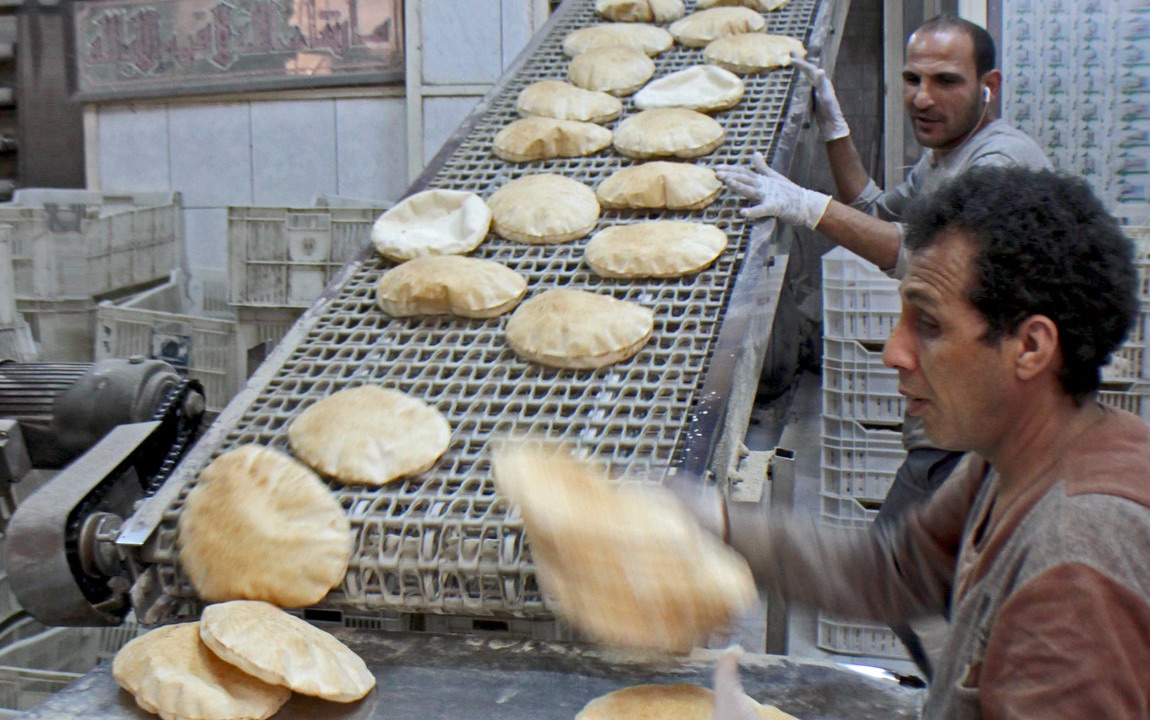Because of its dependence on food imports, Egypt is particularly vulnerable to the high world food prices and trade shocks triggered by Russia’s February 2022 invasion of Ukraine. Imports account for more than 40% of Egypt’s calorie consumption, and the country is the world’s largest importer of wheat, with about 85% coming from Russia and Ukraine before the war began. Since then, supply disruptions, high global market prices, and other factors have led to sharp rises in domestic food inflation, which reached 31% in November. This in turn is a major driver of rising overall annual inflation, which soared from 6% to 19% in between January and November 2022 (CBE, 2022)—the highest rate in five years.
In this post, based on a recent survey, we assess how Egypt’s poor households are responding to these economic stresses, and how the Egyptian government’s social protection efforts have affected consumption since the conflict began. In general, the survey indicates that many poor households cut back on consumption of some unsubsidized nutritious foods while consumption of subsidized foods remained unaffected, suggesting an important role by the national food subsidy program.
Annual inflation rates for some food groups are even higher than the 31% overall figure (Figure 1). Most notably, the inflation rate for bread and cereals approximately quadrupled during the conflict.
Figure 1
Poor households are the most vulnerable to food price inflation, mainly because they allocate a larger share of their income to food consumption. However, strong social protection infrastructure may support vulnerable households during food price shocks. Egypt makes significant investments in social protection and food subsidy programs. For example, the national food subsidy program, Tamween, reaches about 73% of households in Egypt (MSIT, 2019). Throughout the conflict, Egypt’s government has continued to subsidize key food items, keeping their prices unchanged. Consequently, we can expect households to respond differentially to subsidized and unsubsidized foods.
IFPRI surveyed more than 6000 poor and near-poor households from across Egypt by phone in October and November 2022. Households were asked to report how, since March 2022, they perceived that their consumption habits changed, reasons for changes in consumption, perceived changes in prices, and coping strategies that they employed to respond to the price shocks.
Figure 2 displays the changes in consumption for foods for which the largest proportion of households reported either staying the same or decreasing. Overall, across 21 food items, households reported a decrease in consumption of unsubsidized foods and either a slight increase or the same amount of consumption of subsidized foods. Many respondents reported reducing consumption of unsubsidized food items. For example, 85% of households reported reducing meat consumption and 75% reported decreasing consumption of chicken and eggs, which makes intuitive sense given large price increases of these items. Unfortunately, these are nutritious food groups that provide key sources of protein, suggesting a potential decrease in diet quality. Fish and milk are also important sources of protein and other nutrients whose prices also increased substantially.
Figure 2
Conversely, some households reported increasing their consumption of less nutritious food groups to reduce food spending. There were only two foods for which households reported an increase in consumption. Household consumption of potatoes and unsubsidized types of pasta increased among 21% and 14% of households, respectively. These are starchy food items that, while filling, tend to have fewer nutrients. Figure 2 also shows that the reported consumption of the major subsidized foods (bread, sugar, and oil) was unchanged for most households. However, 24% of households report that their consumption of unsubsidized types of bread decreased.
These patterns suggest a potential switch from unsubsidized to subsidized products. Note, importantly, that these changes could have occurred at any time during the period since March 2022, so the scale of the effects partly reflects this long period of time during which, at any point, households may have reduced their consumption of various foods.
Households were also asked about the reasons for reducing consumption of food items. More than two thirds reported that price increases were the main cause. More than 70% of households reporting a reduction in chicken and egg consumption cited price increases as a main reason, while for those cutting back on meat consumption, 85% cited price increases (Figure 3). This is consistent with commodity-specific inflation rates shown in Figure 1. However, it is worth noting that these are perceived changes and actual consumption patterns may evolve differently, as suggested by a recent IFPRI study. Recent studies comparing perceived effects of COVID-19 and actual consumption reductions show that perceived changes are larger than actual reductions in consumption. Our further analysis will explore this as well as the role of alternative social protection programs in cushioning the adverse impacts of food inflation.
Figure 3
Finally, households were asked to report how they had responded to the food price shocks (Figure 4). Some of these coping strategies are likely to have lasting adverse impacts on livelihoods. For instance, selling productive assets or reducing investments in education and health can adversely affect human capital accumulation and reduce future earnings. The most frequently used coping strategy was stopping the repayment of debts (84%), followed by shifting to lower-quality foods and brands (70%), and reducing food consumption (47%). A substantial share of households also reported reducing expenses on health (43%) and education (25%), which may have important implications on future well-being.
Figure 4
Overall, despite the significant increase in price of many staple food items, including bread and cereals, these results suggest the government food subsidy program may have at least partly protected households’ consumption of these food items. The shift away from high-protein foods and towards less nutritious foods is, while expected, unfortunate and may contribute to the double burden of malnutrition and exacerbate the already high rates of overweight and obesity in Egypt, which are linked to food subsidies and associated consumption of energy-dense foods. Ultimately, poor Egyptian households faced substantial difficulties in 2022 that will set many back from graduating from poverty.
Kibrom Abay is a Research Fellow and Egypt Country Program Leader with IFPRI; Naureen Karachiwalla is a Research Fellow with IFPRI's Poverty, Health, and Nutrition Division (PHND); Sikandra Kurdi is a Research Fellow with IFPRI's Development Strategy and Governance Division (DSGD) based in Cairo; Yousra Salama is a DSGD Senior Research Assistant based in Cairo. This post is based on research that is not yet peer reviewed. Opinions are those of the authors.
This work is part of the CGIAR Research Initiatives on National Policies and Strategies (NPS). CGIAR launched NPS with national and international partners to build policy coherence, respond to policy demands and crises, and integrate policy tools at national and subnational levels in six countries in Africa, Asia, and Latin America. CGIAR centers participating in NPS are The Alliance of Bioversity International and the International Center for Tropical Agriculture (Alliance Bioversity-CIAT), International Food Policy Research Institute (IFPRI), International Livestock Research Institute (ILRI), International Water Management Institute (IWMI), International Potato Center (CIP), International Institute of Tropical Agriculture (IITA), and WorldFish. We would like to thank all funders who supported this research through their contributions to the CGIAR Trust Fund.







